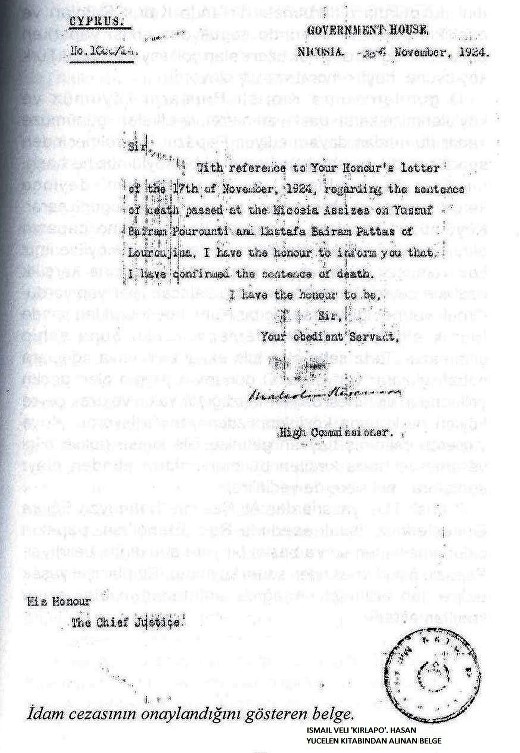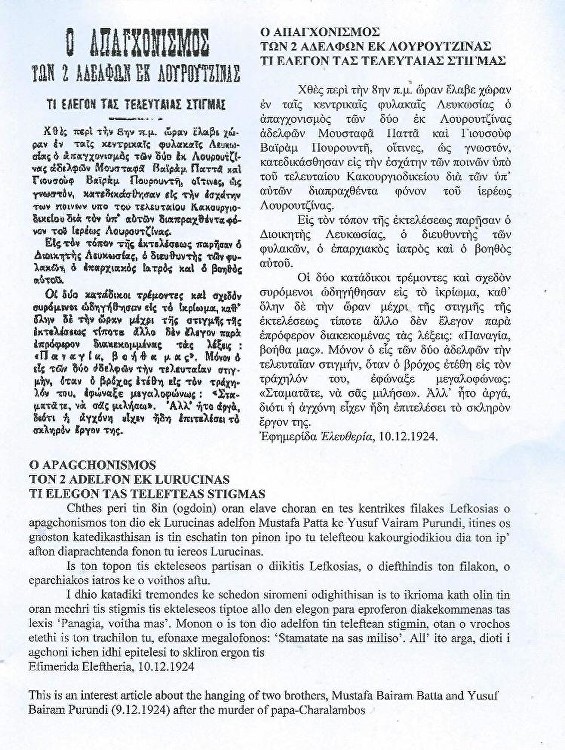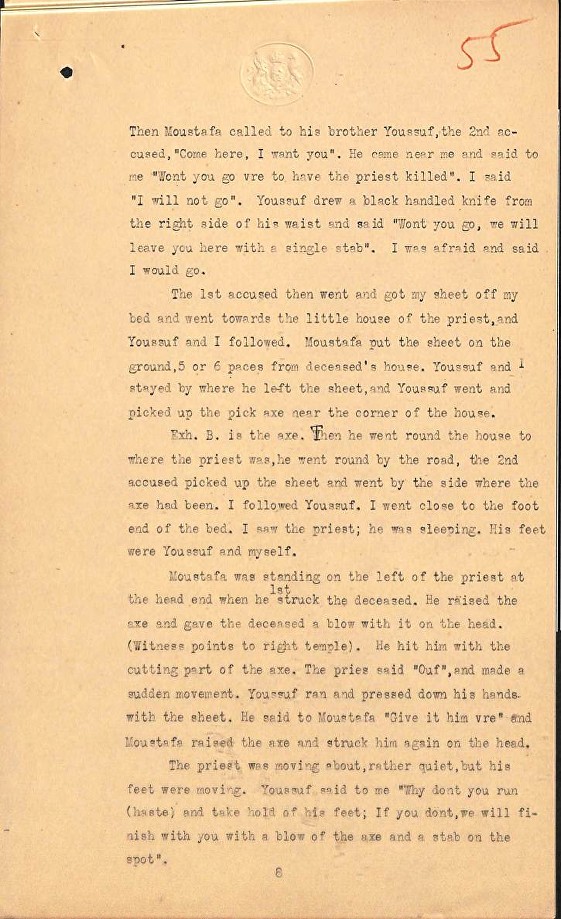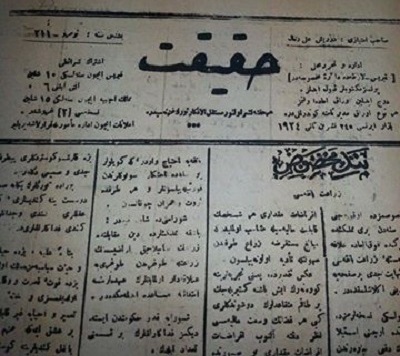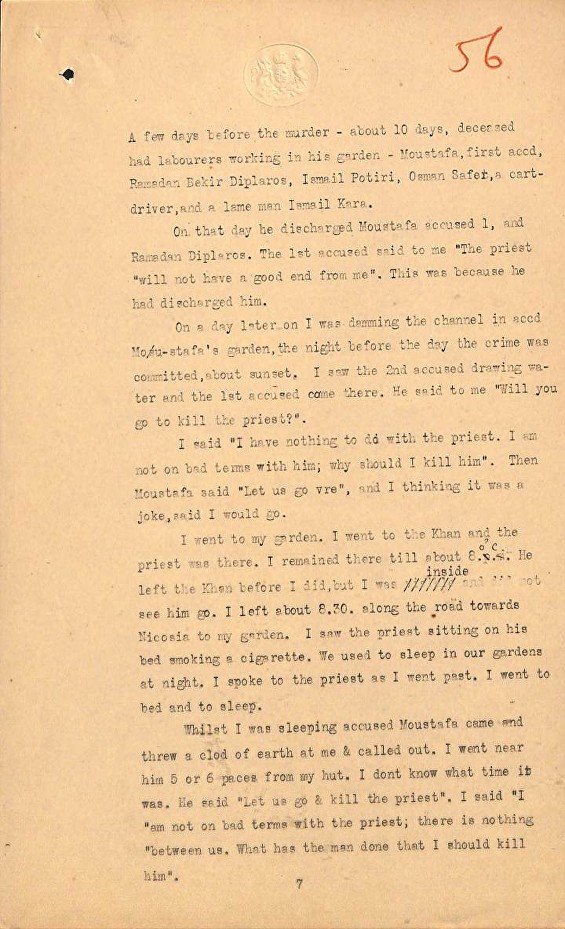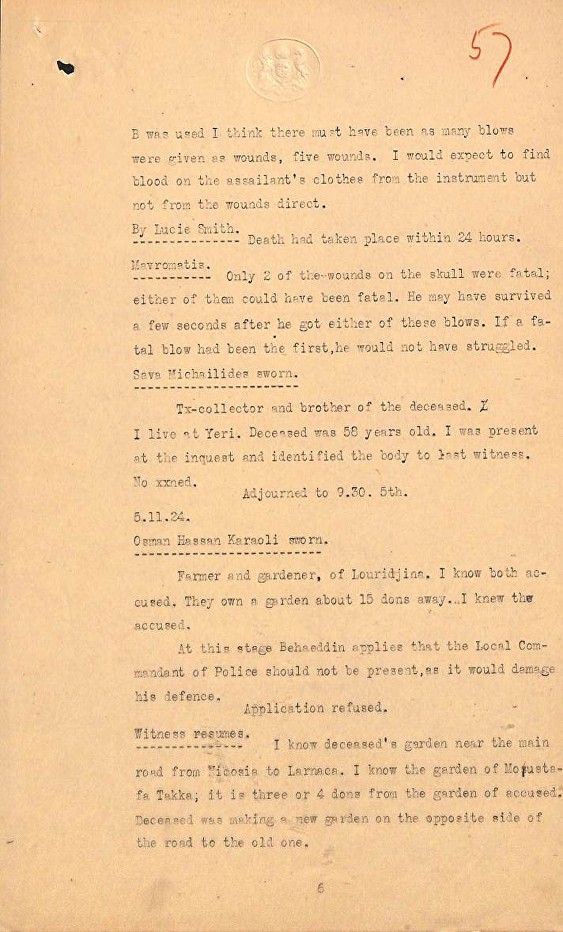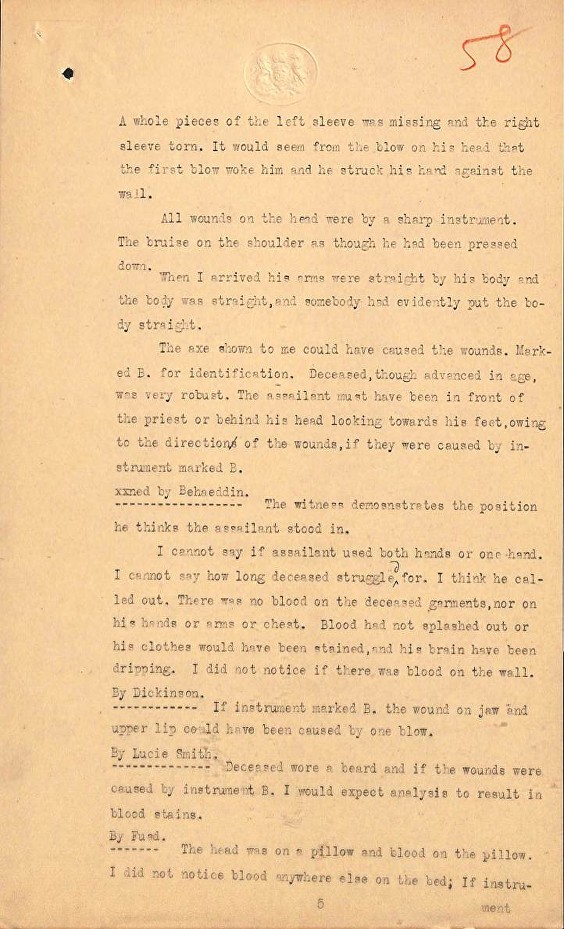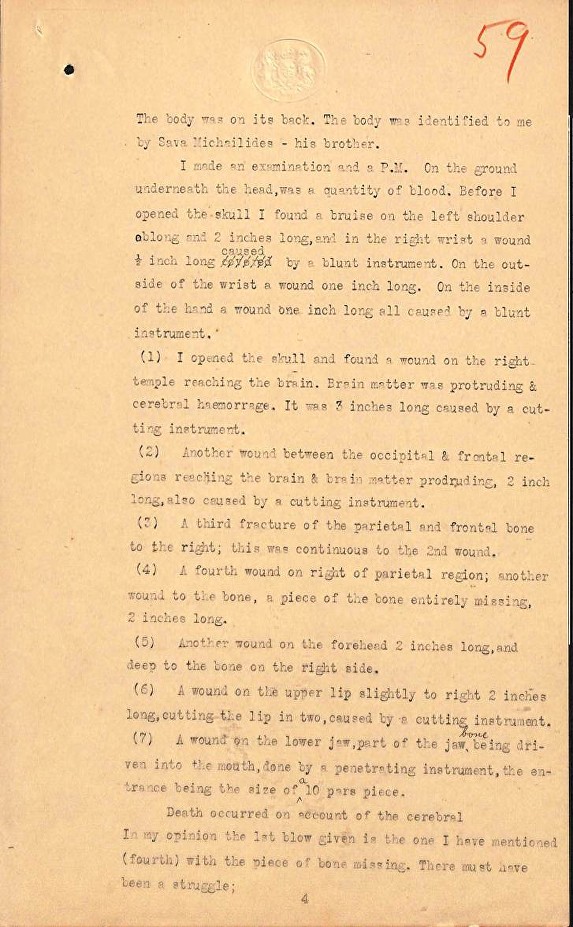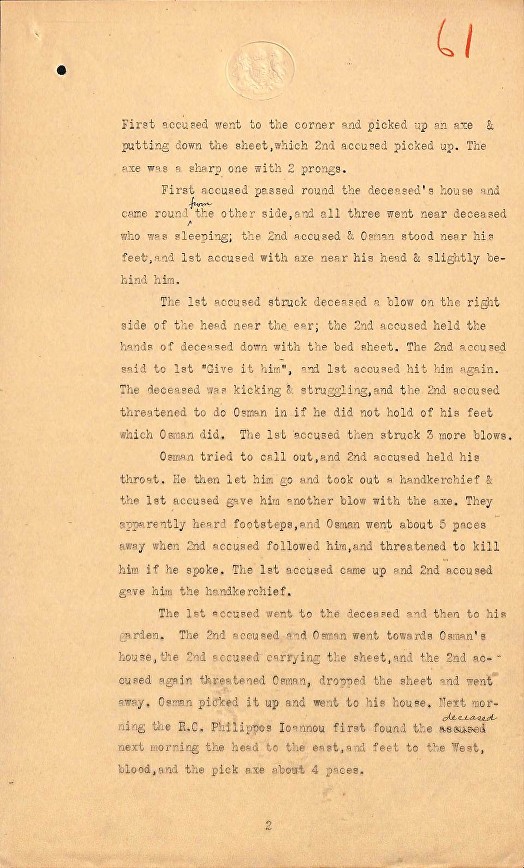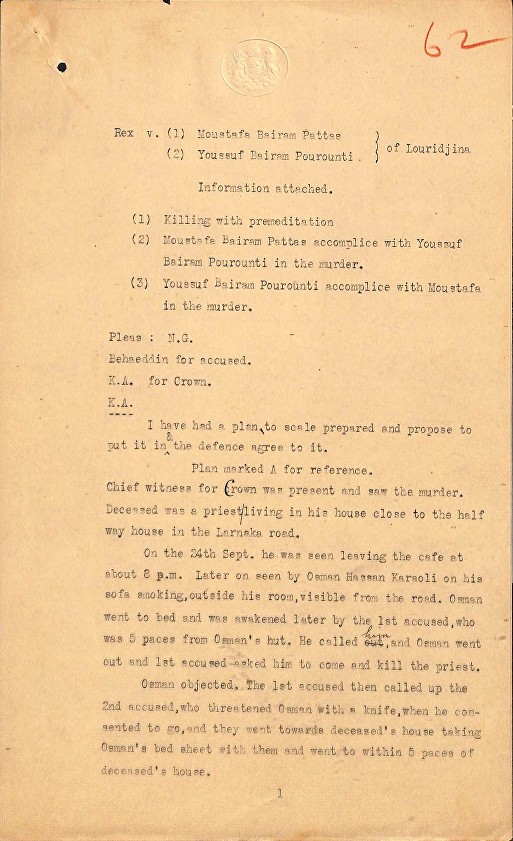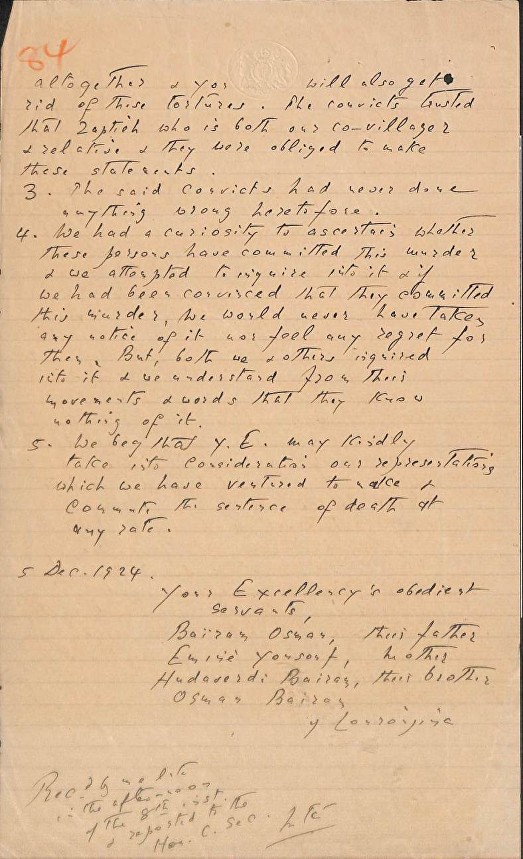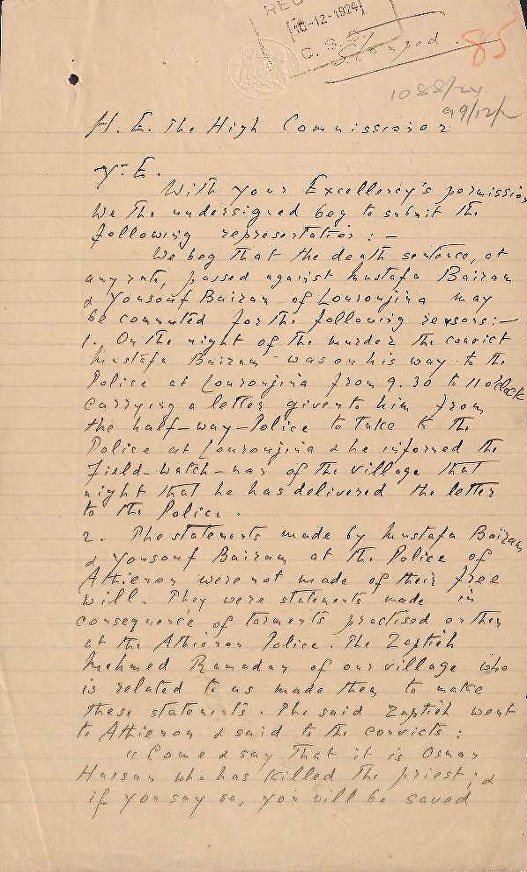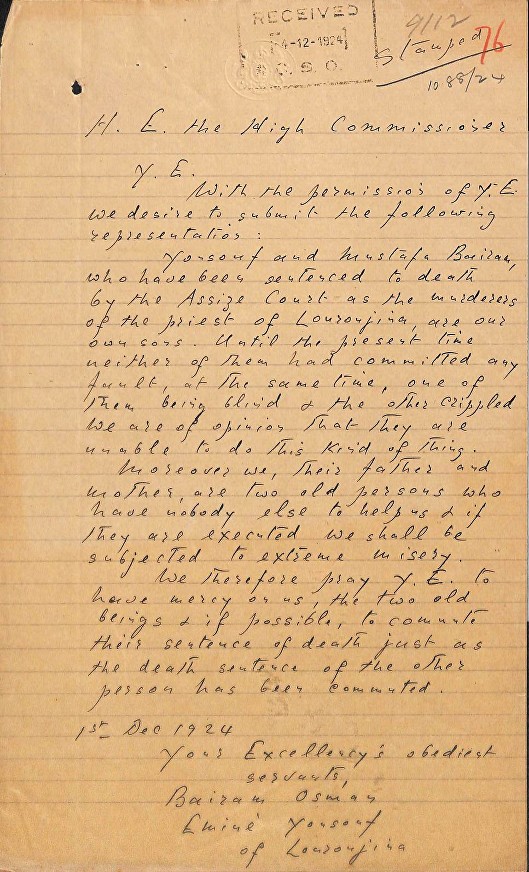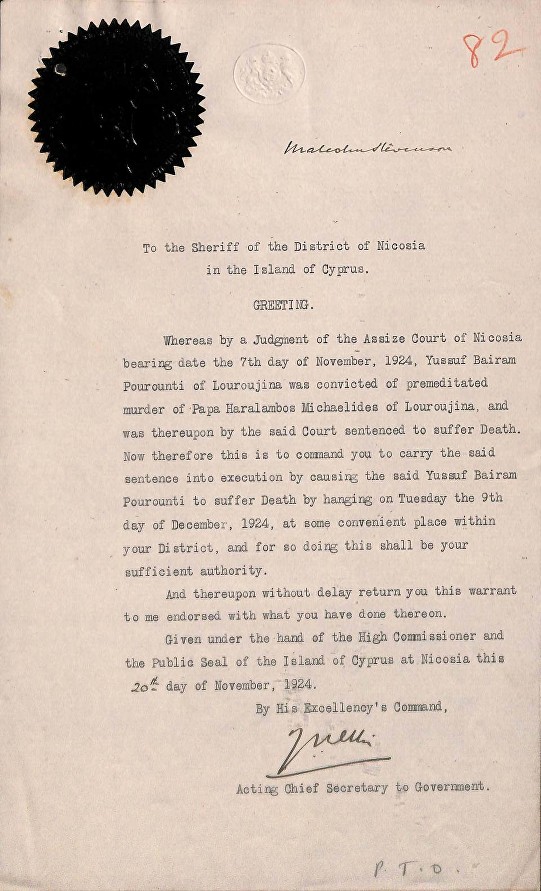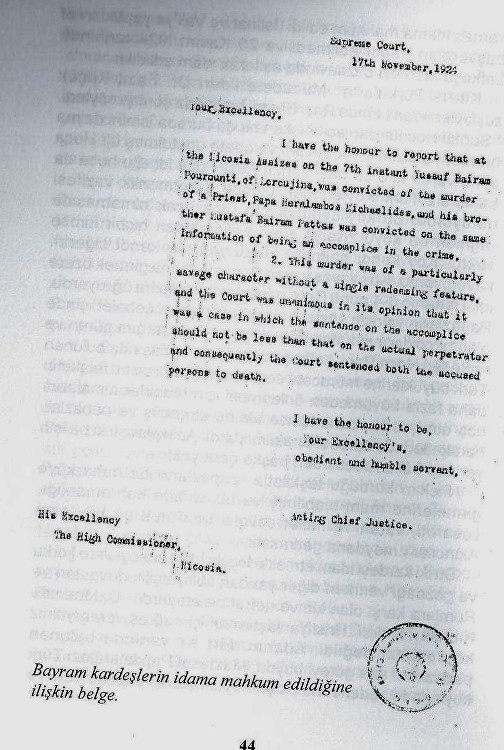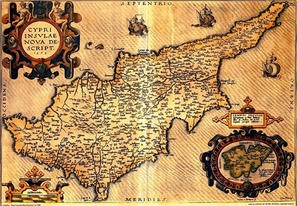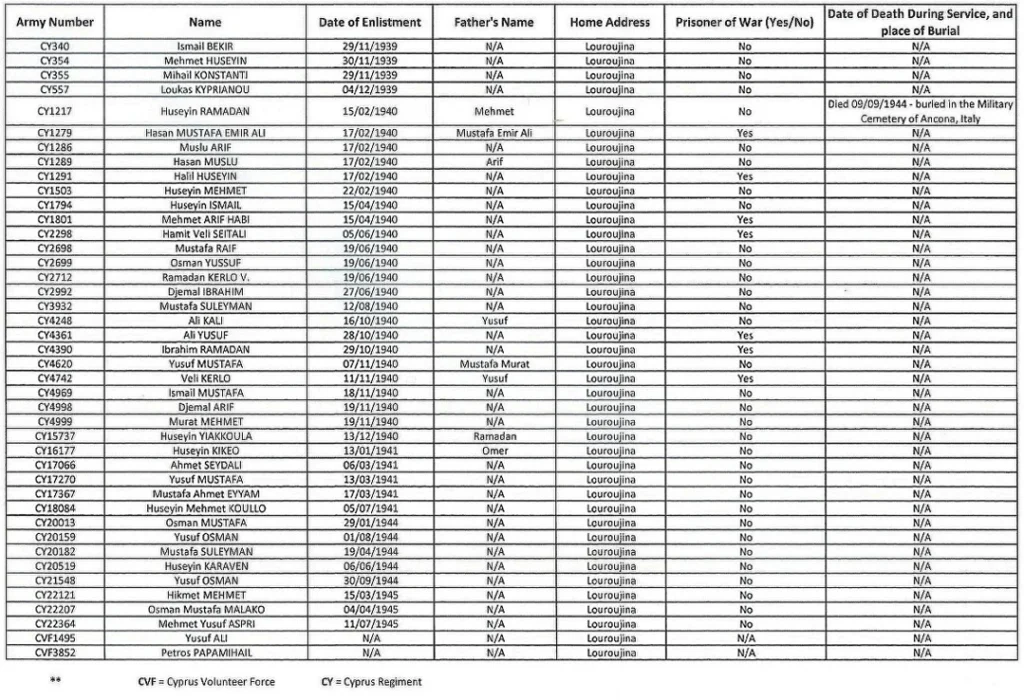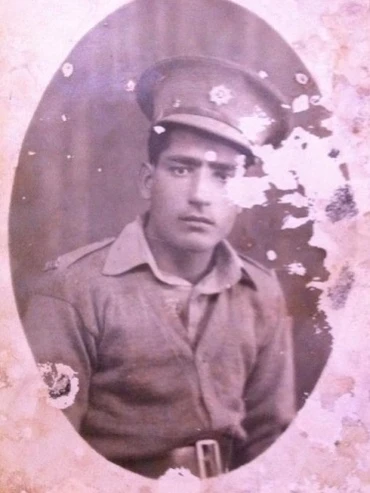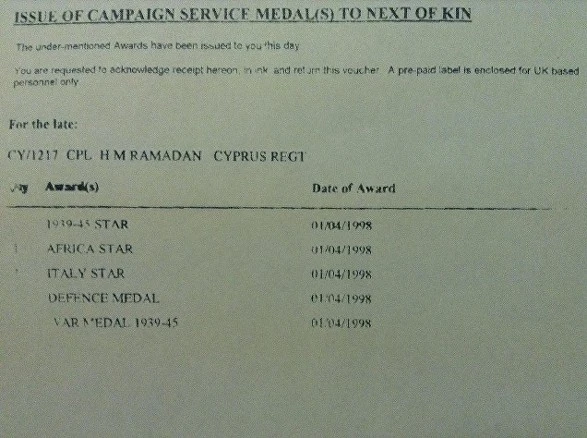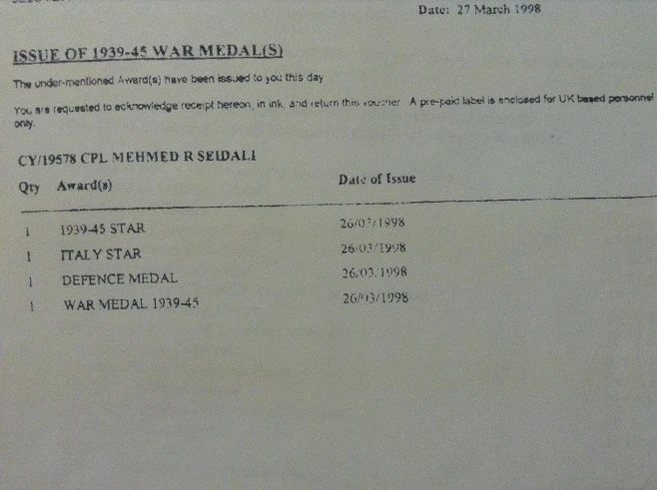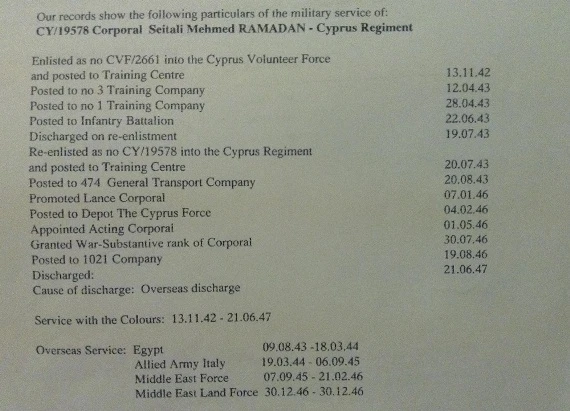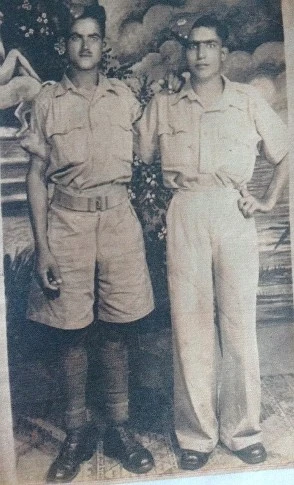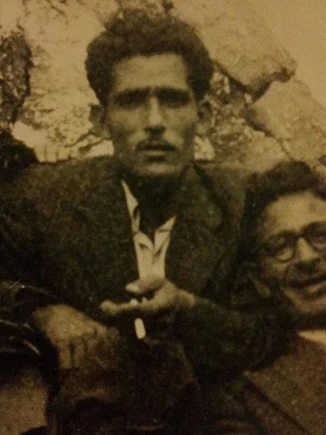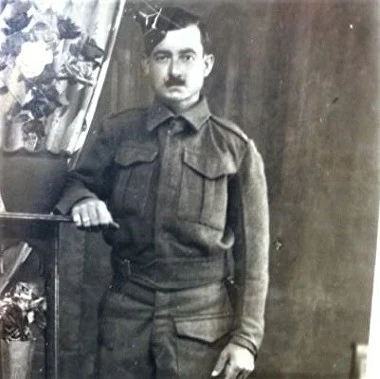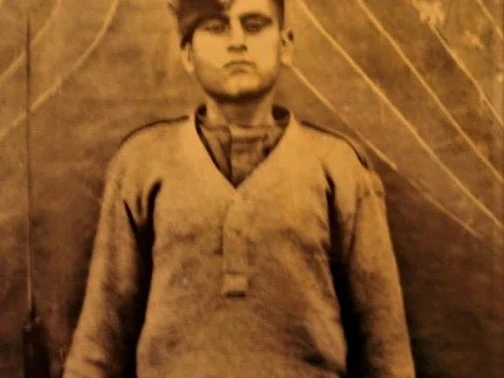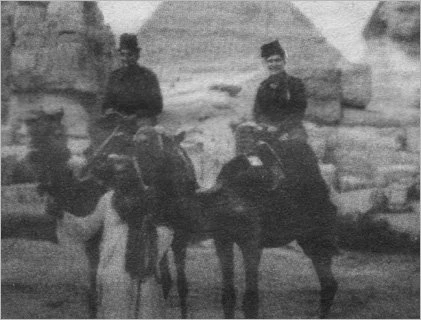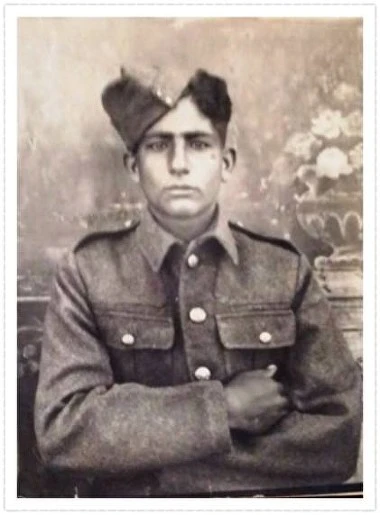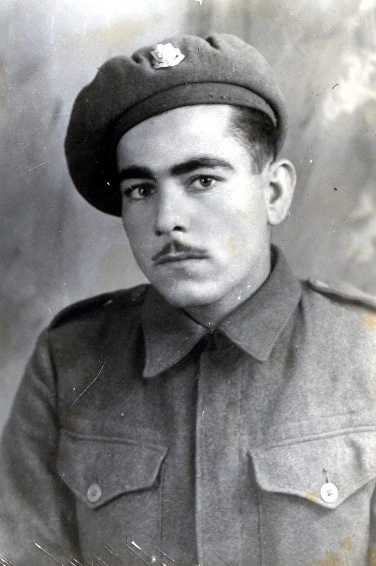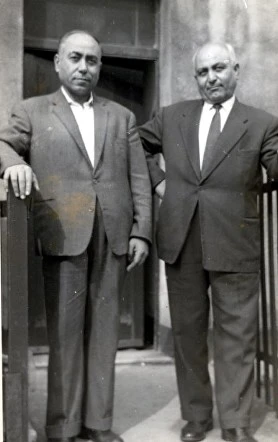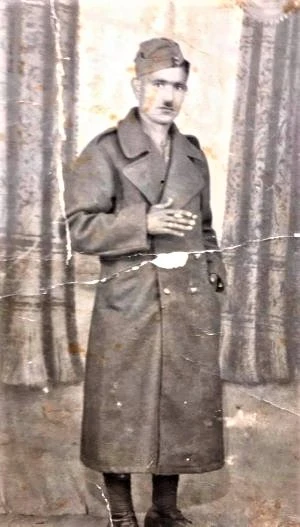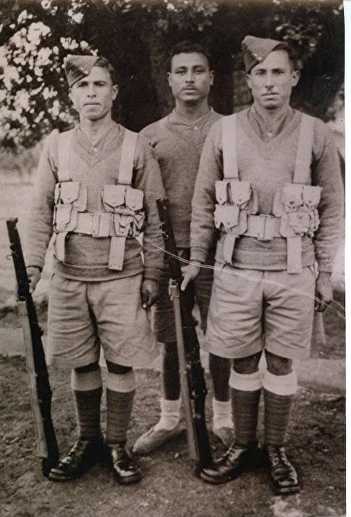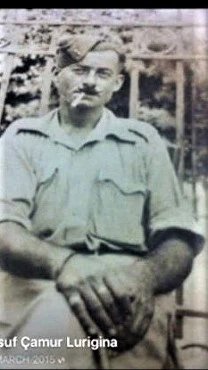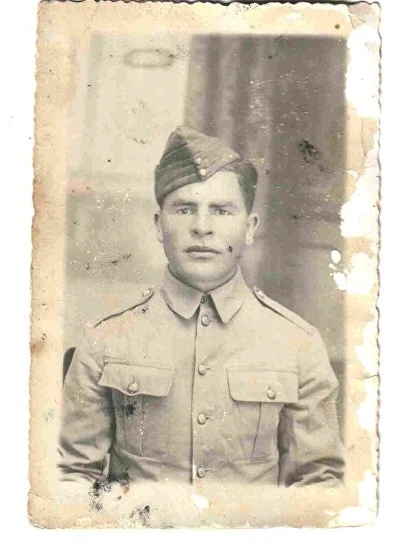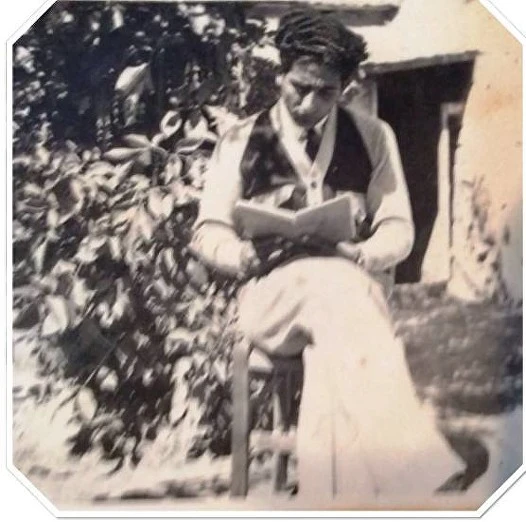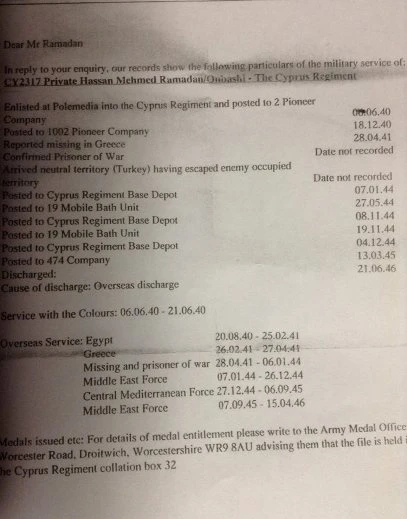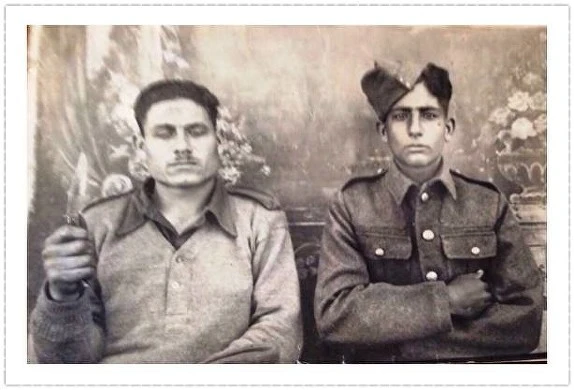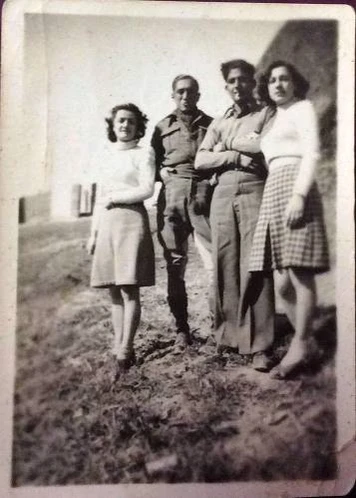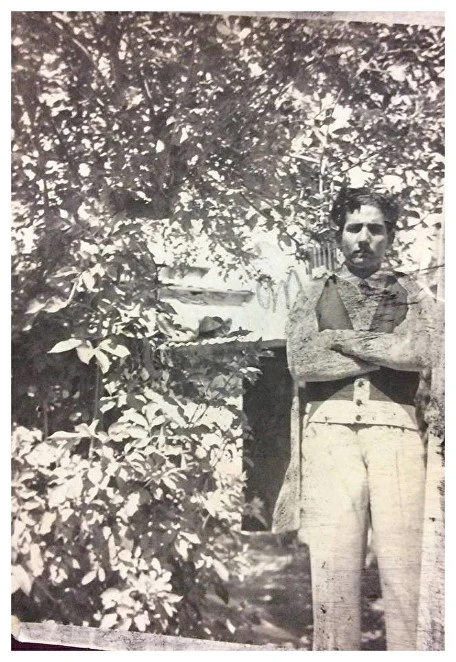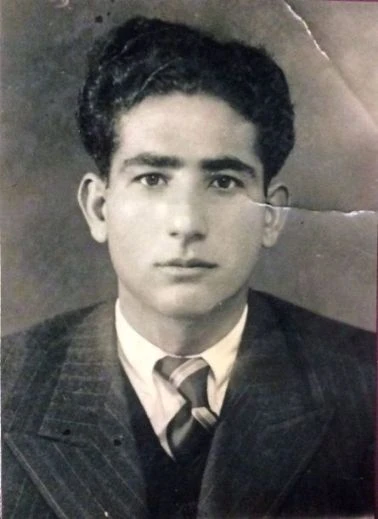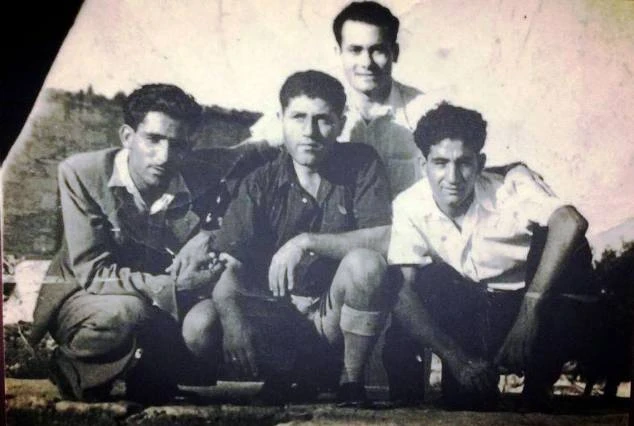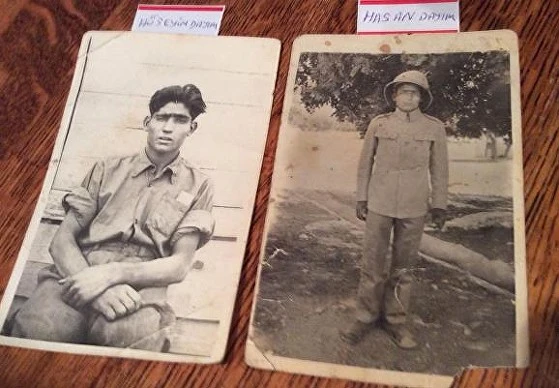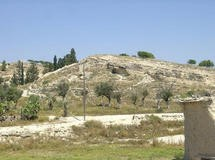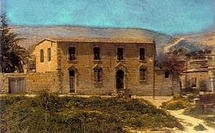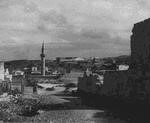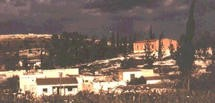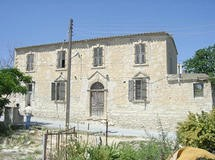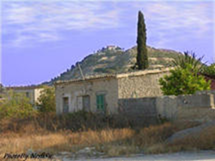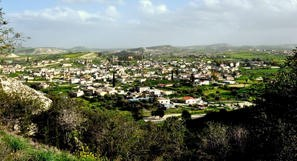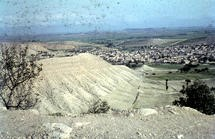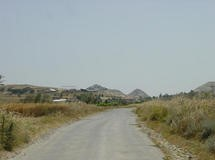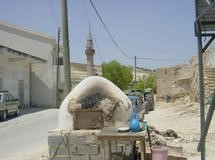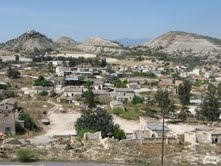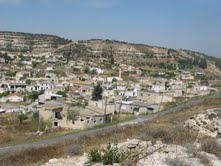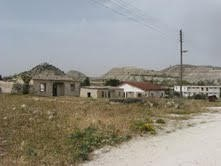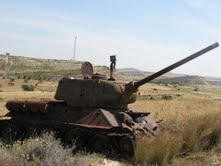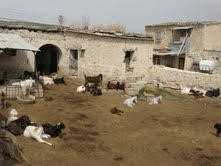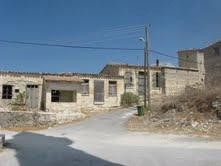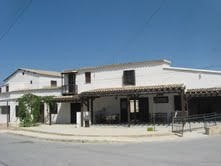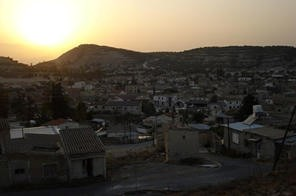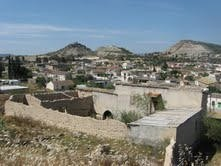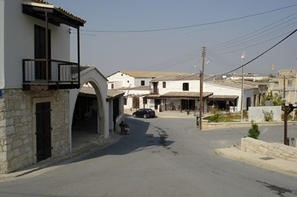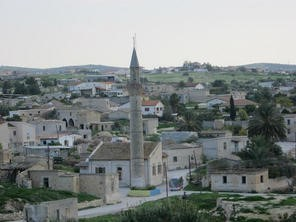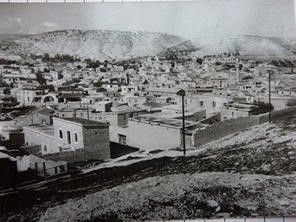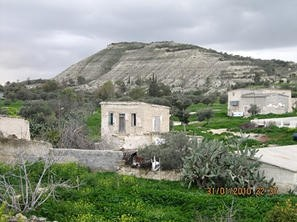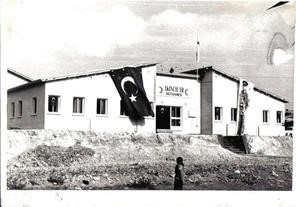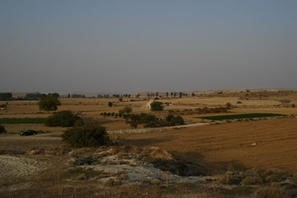The Murder of Papa Charalambous Michaelides
The events surrounding the murder of Papa Charalambous Michaelides and the hanging of Mustafa and Yusuf Bayram in 1924 had created controversy and debate like no other in the history of Lurucina. Even today 90 years after the event, debate, speculation and opinions are exchanged on a constant basis. The debate not only centres around who killed Papa Charalambous Michaelides and the reason, but how two innocent victims of this tragic event were hanged as scapegoats.
Mustafa and Yusuf were evidentially two young men who were mentally immature and simple persons who were framed for the simple reason that the perpetrators believed that the British authorities would not believe the two young men were capable of the murder due to their simple nature.
In the aftermath of the murder the 2 brothers were quickly arrested and held at Dali and Athienou local prisons for interrogation [1] and after intensive pressure they allegedly confessed to the crime and the trial began as soon as possible.
The chief witness for the prosecution, Osman Hasan Garaoli who claimed to be an eyewitness to the killing of the Priest was devastating and the return of a guilty verdict became a foregone conclusion. On the night of the murder, Osman Garaoli claimed that the 2 brothers Mustafa and Yusuf went to his garden (in those days most farmers had a small bedroom to sleep in their fields during the summer period) and asked him to join them in killing Papa Charalambous. [2] He stated that his initial thoughts were that it was just a joke but persistence of the 2 brothers and their threatening attitude made him nervous and he decided to go along to the priests summer room and garden which was near the half way house. Despite the witness statement, from outside point of view, it appears strange that two ‘cold blooded killers’ with such a plan would drag someone else to join against their will at the last minute. It’s very inconsistent with the vast majority of premeditated murders as it could impede their plans. When they arrived at the Priests house they found him to be asleep with his bed up against the garden wall. [3] It was around 21:00-22:00 and Osman went on to explain that Mustafa picked up an axe and Yusuf a club. Seeing this made him strikingly aware of the reality of the situation and he made it clear of no participation. Mustafa went to the priests bed side and bludgeoned him with a tremendous blow – with the defenceless priests sudden jerking movements, Yusuf was called to hold the priest feet and rain in a few blows with his club. It was a most gruesome murder and the one and only witness Osman Hasan Garaoli gave the most vivid description of the murder possible. [4]
The Chief Medical examiner Robert William Clark confirmed the manner of the killing in his forensic examination. For the 2 brothers worse was to come with the testimony of their sister Dudu (Doudou in the transcript) who acted as a witness for the prosecution for which this ended with devastating consequences for the brothers. Her testimony can just about be understood on Document number 40 and in her statement she claimed that late on the evening of the 24th September 1924 her mother handed her Mustafa’s shirt which had blood on the sleeves. This together with the chief witness, Osman Garaoli’s statement were powerful, and the defence had little answer to these damaging statements. [5]
Another strange and contradictory twist to Osman Garaoli’s incriminating eye witness statements was that when Mustafa Bairam gave his own statement, he was asked by the police to admit that it was Osman who actually carried out the killing, and together with his brother the two against Osman would carry much more weight [6] Apparently they refused, not knowing that Osman had already accused the two brothers of the crime, (page 110 parts 1 and 2. This can be seen on pages 16-27.
Almost everyone in the village believed the murder was perpetrated by individuals much more aggressive than the two simple brothers who they truly believed wouldn’t do such a crime. They even go as far as to claim that the blood was put on their shirts and was made to confess making them believe that they would not be hanged. From today’s perspective all the speculation is hearsay and only dying confessions from any perpetrator giving vivid descriptions of the crime and an explanation on how they planned and set up the crime would only carry the weight of the truth. Short of that we can only speculate.
By today’s standards however the murder which took place on the 24 September 1924 ending with the hanging of the two brothers on 20 November 1924 seems incredibly short. So it is quite possible a unfair trial was most likely held in such a short period of time. Additionally, with the statement given by Mustafa Bairam at the trial (page 110 parts 1 and 2 on 7 November 1924), massive pressure was brought to bear on a young and simple person to admit to the murder in order to save his life. Many argue that it is ludicrous to make a confession if innocent but if Yusuf claimed that they were pressured by the police to confess or blame Osman Garaoli or if they did not confess, then they would be hung. He admitted to the court that he was frightened so admitted thinking it would save his life, but denied the actual murder in his court testimony, [7] pages 16-27.
Admittedly the handwriting of the court usher is difficult to read, therefore making it hard to fully understand every word, but it’s clear from the defendants point of view that their mental disability and lack of sufficient intelligence to comprehend worked against them. One example on how the authorities can get it terribly wrong was the murder of Beryl Evans and her baby Geraldine which ended with the hanging of Timothy Evans who was the husband and father of the child, despite the actual murder carried out by John Reginald Christie in 1949. Timothy Evans confessed to the murder of his child only to subsequently deny and admit he was in shock, and did not know what he was saying. [8] This of course only came to light after he was hanged. The capture of John Reginald Christie, the real murderer and his confession with all the other evidence including other bodies of his victims forced the British home office and police to admit that Timothy Evans was innocent, prompted them to grant a posthumous pardon. [9] Timothy was also a very simple man who often spun pub tales which were not often true and the propensity to make up stories worked against him in court as being a liar therefore sealing his death sentence.
Circling back to the two brothers, who the whole village believed were totally innocent. In spite of the passage of time, many questions still remain unanswered. Did the British authorities find it easier to speed up the court case and just hang two innocents in order to look like justice had been served? Why was the trial so rushed? Why did the authorities not investigate the matter more thoroughly? The hanging of Yusuf and Mustafa seemed to them a much easier option of appearing to do justice rather than investigating the murder much more thoroughly. It’s clear that the priests’ massive attempts to convert as many Turkish villagers to the Orthodox faith cost him his life. Equally the British authorities were eager to wrap up the case as quickly as possible in order to calm what was a tense situation in the village. Whatever the reason is, is it clear the hangings of Yusuf and Mustafa that took place 90 years ago and the speculation surrounding it will continute in the future. It’s unlikely we shall ever know the truth about the tragic events of 24th September 1924.
References
[1] 1.S.M.3 page 110 parts 1 and 2. 07.11.1924
[2] Page 2-3 of the court records
[3] Page 3 of the court records
[4] Doc 0 8-09; pages 2-5
[5] Doc 041-042; pages 62-64 of the court records
[6] Page 110 parts 1 and 2 of the court records
[7] Page 110parts 1 and 2 of the court records
[8] Wikipedia. Timothy Evans confessed that he killed his wife and threw her down the sewer on 30 November 1949. It turned out that he was in complete shock and did not know what he was saying. John Cristie subsequently admitted to the killing, and was also hanged.
[9] An official inquiry concluded in 1966 that Christie had also murdered Evans’s daughter, and Evans was granted a posthumous pardon

